When you think of weeds, all that comes to mind are thorny, ugly-looking plants that ruin your garden landscape. However, the lantana plant is a unique weed that bears clusters of beautiful flowers. It was originally cultivated due to its pretty blooms as an ornamental plant; however, due to its aggressive weed-like growth and toxic nature, it is now classified as a weed.
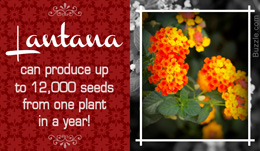
Language of FlowersIn the Victorian era, flowers held a place of significance, and each flower had a special meaning. The flowers of the lantana plant symbolized rigor.The lantana plant is one of the most popular annuals used in gardens. They are favored because their blooms are long-lasting, they are easy to grow, and they thrive in most soil conditions. Deadheading is carried out to encourage continuous blooming and to prevent the growth of the berries. Some of the cultivated varieties (cultivars) of this plant grow to as much as 5 - 6 ft in height, forming large, bushy mounds, while others stay low and spread, reaching up to 4 ft in width, but only 1 - 2 ft in height.Lantana Plant
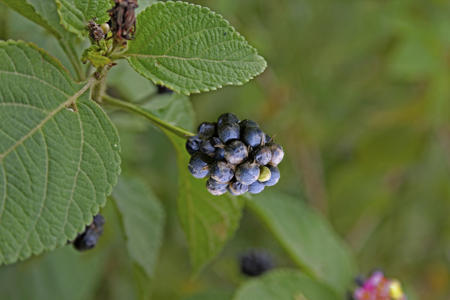
Lantana is a genus consisting of more than 150 species of flowering plants in the
Verbena family. The clusters of flowers borne by the lantana plants, called umbels, are a mix of red, orange, yellow, or blue and white florets. The flowers typically change color as they mature, resulting in a multicolored inflorescence. The flowers mature into toxic berries, which start off as green and turn black as they mature.Growing and Caring for a Lantana Plant
- Lantana are fast-growing, evergreen shrubs. These plants grow well in most soil conditions, but they prefer slightly acidic soil.
- They do well in hot climate and do not need much watering. Moist, fertile, and well-drained soil are the best choices for them.
- Seeds should be sown in the spring, but it can also grow well from semi-ripe cuttings in summer.
- A balanced liquid fertilizer should be sprayed once a month during the growing period.
- Deadhead the plant as and when required. Indoor-grown varieties require extensive pruning in late winter.
Diverse VarietiesDallas Red
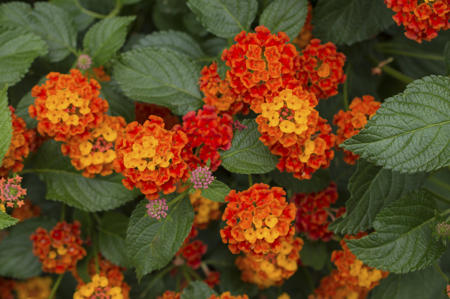
It grows up to 3 ft tall, and has orange, yellow, and red blooms that turn deep red.Patriot Marc Cathey
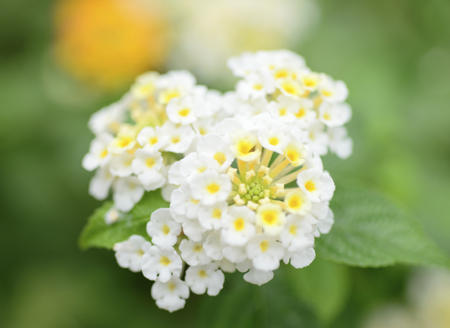
It is a tall, sterile, and white flowering variety. The flower centers are a clear lemon yellow. It attains a height and width of up to 5 ft.Athens Rose
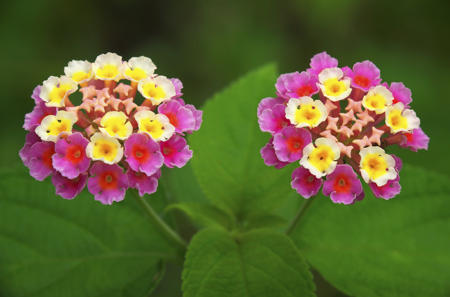
It forms an upright mound up to 3 ft tall. The flower buds are magenta, opening to deep rose-pink and yellow.New Gold
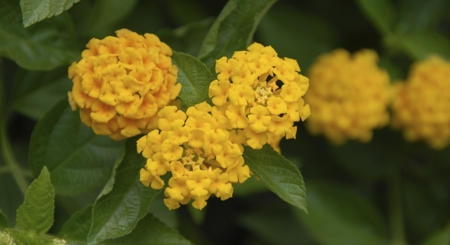
It is very similar or the same as Gold Mound. It is a vigorous spreading plant that reaches up to 2 ft tall and 4 ft wide. This is a heavy-blooming cultivar with deep gold, sterile flowers that do not mature into berries.Samantha
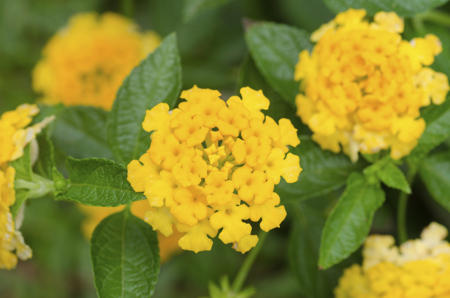
It has a dark green and chartreuse variegated foliage with bright lemon yellow flowers. It is the same as Lemon Swirl. Plants grow 2-3 ft tall and 4 ft wide. It is a sterile cultivar that does not produce berries.Clear White
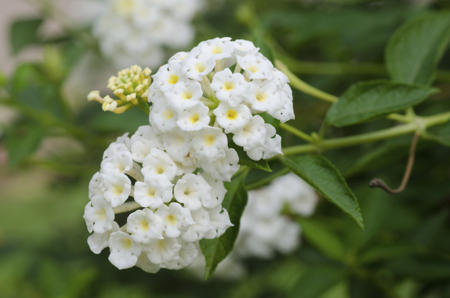
It is low spreading with pure white flowers.Radiation
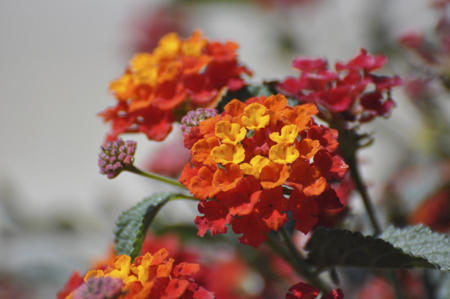
It is a tall upright cultivar growing 4-5 ft tall and wide. Flowers are orange-red.Silver Mound
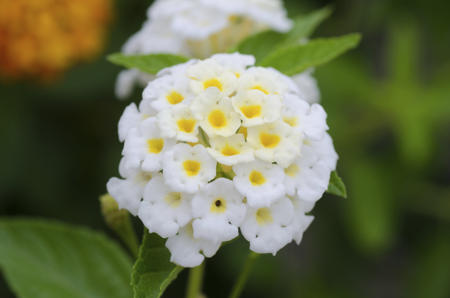
It is a spreading cultivar with creamy white flowers that have a gold eye. It does not usually produce berries.Patriot Cowboy
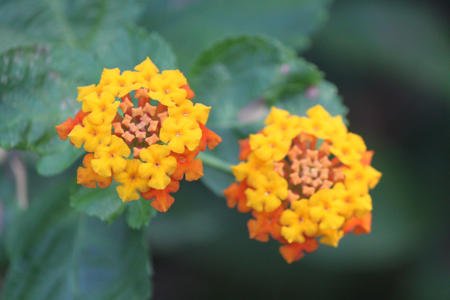
It grows to only 12" tall and 12" wide. The blooms begin as orange buds that open bright yellow, and change to bright orange.New Red
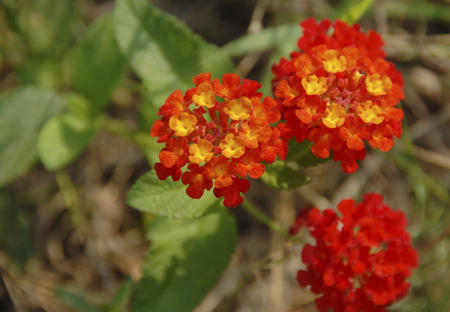
It is very similar or the same as Dallas Red. The flowers are orange, yellow, and crimson. This cultivar is the reddest lantana available.Patriot Deen Day Smith
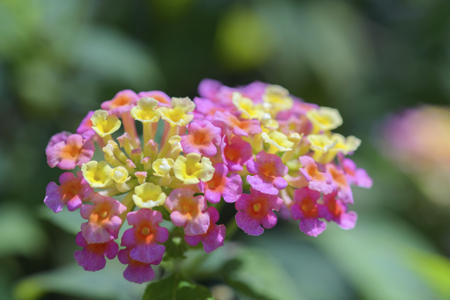
It is a newer variety with pastel-colored, sterile blooms of rose pink and canary yellow apricot. This is a vigorous growing mounding type that attains a height and width of up to 5 ft.Patriot Popcorn
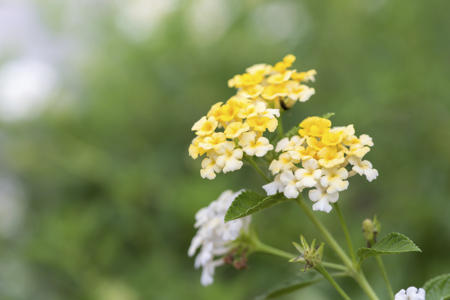
It is a small cultivar that grows only 12" tall and 24" wide. Flowers are white and yellow in color.Patriot Desert Sunset
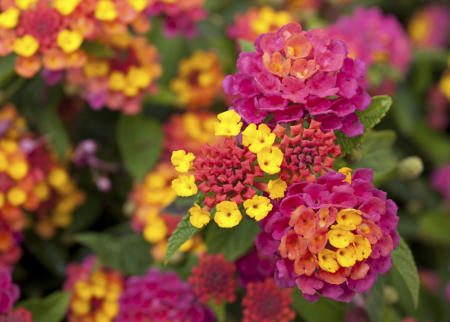
It grows 3 ft tall and wide. Flowers are orange, gold, pink, and coral.Patriot Rainbow
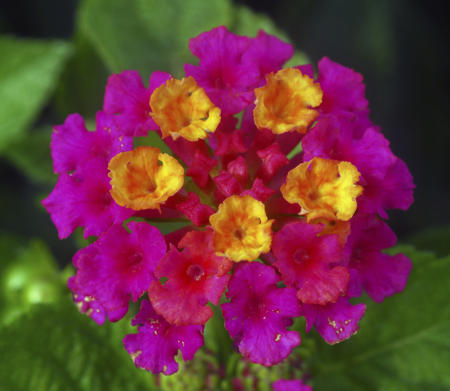
It grows to only 12" tall and 15" wide. This cultivar is the same as Confetti. It is extremely free flowering, and the flowers open chiffon yellow, and then change to orange and fuchsia-pink.Mozelle
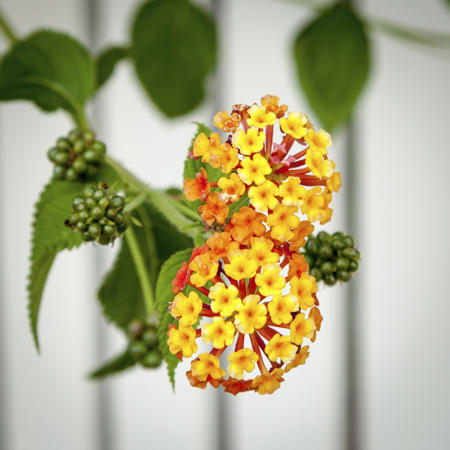
It is similar to Miss Huff in size and hardiness, but the flowers are softer in color, sterile, and vary from pale yellow to peach and soft pink.Miss Huff
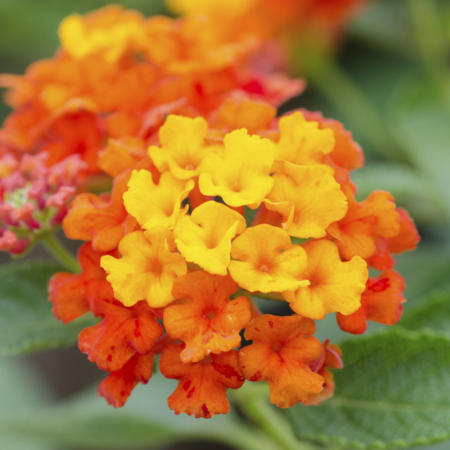
It forms an upright mound that's up to 5 - 6 ft tall. Flowers are sterile, and a mix of orange, coral, and gold.Patriot Honeylove
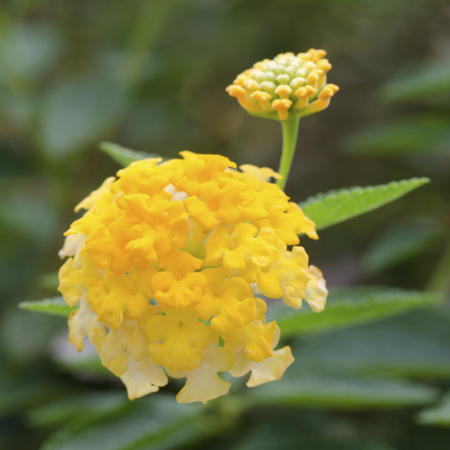
It spreads up to 2 ft tall and 3 ft wide with pale pink, butter yellow, and ivory flowers.Problems Faced
- If not enough light is provided, there can be an event of powdery mildew. Also, if the plant is watered exceedingly, it may develop root rot.
- Pests like whiteflies can cause sooty mold, which leads to black discoloration of the leaves. Lace bugs cause the foliage to turn gray or brown and then drop off.
- Its extensive seed production favors rat populations.
- In New Caledonia, by increasing fire intensity as a result of its large dry biomass as well as its smothering effect, it displaces natural scrub communities.
- It is known to be toxic to cattle, sheep, horses, dogs, and goats.
- It also excretes chemicals that reduce the growth of surrounding plants by inhibiting germination and root elongation.
UsesMedicinal
- Studies conducted in India have found that lantana leaves display antimicrobial, fungicidal, and insecticidal properties.
- It has also been used in traditional herbal medicines for treating a variety of ailments such as rabies, chickenpox, measles, asthma, and ulcers.
- There are also some scientific studies that have shown beneficial effects. One such study found that an extract from the plant reduced ulcer development in rats. Extracts from the plant have also been used to treat respiratory infections in Brazil.
Ornamental
- This plant has been grown specifically for use as an ornamental plant due to its ability to last for a relatively long time without water and the fact that it is not affected by many pests or diseases.
- Lantana flowers are attractive to bees and butterflies, and so are frequently used in butterfly gardens.
- Some types of weaver birds use the flowers to decorate their nests.
Interesting Trivia
♠ Lantana plants are salt and drought tolerant.
♠ The leaves are poisonous to most animals.
♠ They are native to the tropical regions of North and South America and Africa.
♠ In Australia, lantana is regarded as one of the worst invasive weeds, as it spreads quickly and takes over other plants in the area.
♠ It has been used in traditional folk remedies to treat skin conditions, stress, and high blood pressure.
♠ The endangered mahogany glider
(Petaurus gracilis) species is at risk from lantana invasion.
♠ It can tolerate fire by regenerating from basal shoots.
♠ The leaves work as a soothing agent in cases of insect stings, skin eruptions, cuts, scrapes, ulcerations, the itch of measles and chickenpox, and also in case of parasites such as scabies.
♠ Lantana is mentioned in folklore as being of help in snakebite cases.
♠ The leaves, dried and burned, have been used for centuries as a natural mosquito repellent.
♠ A mild tea made from the leaf is used in the Caribbean Islands to ease cold symptoms.
♠ The ripe berries are used to make jam, jellies, pies, and cordials in Ecuador.
♠ It is a cousin to the American Beautyberry.






 Language of FlowersIn the Victorian era, flowers held a place of significance, and each flower had a special meaning. The flowers of the lantana plant symbolized rigor.The lantana plant is one of the most popular annuals used in gardens. They are favored because their blooms are long-lasting, they are easy to grow, and they thrive in most soil conditions. Deadheading is carried out to encourage continuous blooming and to prevent the growth of the berries. Some of the cultivated varieties (cultivars) of this plant grow to as much as 5 - 6 ft in height, forming large, bushy mounds, while others stay low and spread, reaching up to 4 ft in width, but only 1 - 2 ft in height.Lantana Plant
Language of FlowersIn the Victorian era, flowers held a place of significance, and each flower had a special meaning. The flowers of the lantana plant symbolized rigor.The lantana plant is one of the most popular annuals used in gardens. They are favored because their blooms are long-lasting, they are easy to grow, and they thrive in most soil conditions. Deadheading is carried out to encourage continuous blooming and to prevent the growth of the berries. Some of the cultivated varieties (cultivars) of this plant grow to as much as 5 - 6 ft in height, forming large, bushy mounds, while others stay low and spread, reaching up to 4 ft in width, but only 1 - 2 ft in height.Lantana Plant Lantana is a genus consisting of more than 150 species of flowering plants in the Verbena family. The clusters of flowers borne by the lantana plants, called umbels, are a mix of red, orange, yellow, or blue and white florets. The flowers typically change color as they mature, resulting in a multicolored inflorescence. The flowers mature into toxic berries, which start off as green and turn black as they mature.Growing and Caring for a Lantana Plant
Lantana is a genus consisting of more than 150 species of flowering plants in the Verbena family. The clusters of flowers borne by the lantana plants, called umbels, are a mix of red, orange, yellow, or blue and white florets. The flowers typically change color as they mature, resulting in a multicolored inflorescence. The flowers mature into toxic berries, which start off as green and turn black as they mature.Growing and Caring for a Lantana Plant It grows up to 3 ft tall, and has orange, yellow, and red blooms that turn deep red.Patriot Marc Cathey
It grows up to 3 ft tall, and has orange, yellow, and red blooms that turn deep red.Patriot Marc Cathey It is a tall, sterile, and white flowering variety. The flower centers are a clear lemon yellow. It attains a height and width of up to 5 ft.Athens Rose
It is a tall, sterile, and white flowering variety. The flower centers are a clear lemon yellow. It attains a height and width of up to 5 ft.Athens Rose It forms an upright mound up to 3 ft tall. The flower buds are magenta, opening to deep rose-pink and yellow.New Gold
It forms an upright mound up to 3 ft tall. The flower buds are magenta, opening to deep rose-pink and yellow.New Gold It is very similar or the same as Gold Mound. It is a vigorous spreading plant that reaches up to 2 ft tall and 4 ft wide. This is a heavy-blooming cultivar with deep gold, sterile flowers that do not mature into berries.Samantha
It is very similar or the same as Gold Mound. It is a vigorous spreading plant that reaches up to 2 ft tall and 4 ft wide. This is a heavy-blooming cultivar with deep gold, sterile flowers that do not mature into berries.Samantha It has a dark green and chartreuse variegated foliage with bright lemon yellow flowers. It is the same as Lemon Swirl. Plants grow 2-3 ft tall and 4 ft wide. It is a sterile cultivar that does not produce berries.Clear White
It has a dark green and chartreuse variegated foliage with bright lemon yellow flowers. It is the same as Lemon Swirl. Plants grow 2-3 ft tall and 4 ft wide. It is a sterile cultivar that does not produce berries.Clear White It is low spreading with pure white flowers.Radiation
It is low spreading with pure white flowers.Radiation It is a tall upright cultivar growing 4-5 ft tall and wide. Flowers are orange-red.Silver Mound
It is a tall upright cultivar growing 4-5 ft tall and wide. Flowers are orange-red.Silver Mound It is a spreading cultivar with creamy white flowers that have a gold eye. It does not usually produce berries.Patriot Cowboy
It is a spreading cultivar with creamy white flowers that have a gold eye. It does not usually produce berries.Patriot Cowboy It grows to only 12" tall and 12" wide. The blooms begin as orange buds that open bright yellow, and change to bright orange.New Red
It grows to only 12" tall and 12" wide. The blooms begin as orange buds that open bright yellow, and change to bright orange.New Red It is very similar or the same as Dallas Red. The flowers are orange, yellow, and crimson. This cultivar is the reddest lantana available.Patriot Deen Day Smith
It is very similar or the same as Dallas Red. The flowers are orange, yellow, and crimson. This cultivar is the reddest lantana available.Patriot Deen Day Smith It is a newer variety with pastel-colored, sterile blooms of rose pink and canary yellow apricot. This is a vigorous growing mounding type that attains a height and width of up to 5 ft.Patriot Popcorn
It is a newer variety with pastel-colored, sterile blooms of rose pink and canary yellow apricot. This is a vigorous growing mounding type that attains a height and width of up to 5 ft.Patriot Popcorn It is a small cultivar that grows only 12" tall and 24" wide. Flowers are white and yellow in color.Patriot Desert Sunset
It is a small cultivar that grows only 12" tall and 24" wide. Flowers are white and yellow in color.Patriot Desert Sunset It grows 3 ft tall and wide. Flowers are orange, gold, pink, and coral.Patriot Rainbow
It grows 3 ft tall and wide. Flowers are orange, gold, pink, and coral.Patriot Rainbow It grows to only 12" tall and 15" wide. This cultivar is the same as Confetti. It is extremely free flowering, and the flowers open chiffon yellow, and then change to orange and fuchsia-pink.Mozelle
It grows to only 12" tall and 15" wide. This cultivar is the same as Confetti. It is extremely free flowering, and the flowers open chiffon yellow, and then change to orange and fuchsia-pink.Mozelle It is similar to Miss Huff in size and hardiness, but the flowers are softer in color, sterile, and vary from pale yellow to peach and soft pink.Miss Huff
It is similar to Miss Huff in size and hardiness, but the flowers are softer in color, sterile, and vary from pale yellow to peach and soft pink.Miss Huff It forms an upright mound that's up to 5 - 6 ft tall. Flowers are sterile, and a mix of orange, coral, and gold.Patriot Honeylove
It forms an upright mound that's up to 5 - 6 ft tall. Flowers are sterile, and a mix of orange, coral, and gold.Patriot Honeylove It spreads up to 2 ft tall and 3 ft wide with pale pink, butter yellow, and ivory flowers.Problems Faced
It spreads up to 2 ft tall and 3 ft wide with pale pink, butter yellow, and ivory flowers.Problems Faced